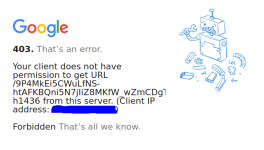Hello!
I have just measured my fathers BeoLab 5 speakers, and I got some strange results. See attached SPL-curve. We can see a clear cutoff at 7 kHz. Any idea why this might happen?
I have just measured my fathers BeoLab 5 speakers, and I got some strange results. See attached SPL-curve. We can see a clear cutoff at 7 kHz. Any idea why this might happen?
An externally hosted image should be here but it was not working when we last tested it.
Hi! Welcome to the forum.
The Beolab 5 includes four active speaker units, each with its own amplifier - high-range, mid-range, higher bass and deep bass.
There could be a high-range amplifier fault, but unlikely to be present on both stereo speakers.
Let's see what other users have to say.
The Beolab 5 includes four active speaker units, each with its own amplifier - high-range, mid-range, higher bass and deep bass.
There could be a high-range amplifier fault, but unlikely to be present on both stereo speakers.
Let's see what other users have to say.
while I do not see the attached file, if measured fr response falls of too soon, your measurements settings ate likely the problem
otherwise, if tweeters are not working, you would not need to measure, you would just hear it!
otherwise, if tweeters are not working, you would not need to measure, you would just hear it!
With the cliff at ~6kHz the graph certainly looks like either the two 18mm tweeters are blown, the two high frequency ICE amplifier modules are not functioning, or the connections into or out of the high frequency amplifiers or tweeters have come apart. They would sound like they don't have any 'air'.
Last edited:
250 watts going to 3/4" tweeters? Yikes!
Wonder if that could have anything to do with the drop over 7kHz?
at normal listening level, there is less than one watt (yes 1 watt) going to the total speaker
at party levels, this may be few tens or hundreds watts
but tweeter receives very little due to normal content in treble in music is low
ESP - Frequency, Amplitude and dB
unless someone goes nuts
but, as I said before, wouldn't you know already by listening that tweeters are blown?
at party levels, this may be few tens or hundreds watts
but tweeter receives very little due to normal content in treble in music is low
ESP - Frequency, Amplitude and dB
unless someone goes nuts
but, as I said before, wouldn't you know already by listening that tweeters are blown?
Last edited:
If the voice coil gets fried, it wont make any noise at all(After the fact). One big 250 watt mistaken transient is all it would take. Been there done that.
I've had active speakers for years now, with amplifiers of around 350W@ 4 ohms coupled directly to 1" tweeters and smaller midranges.... very loud, plays everyday, and nothing ever happened 🙂
Since B&O has been known to use scan speak, and based on the age of this speaker, this could be the tweeter being used(Or one very similar). If the long term power handling at 4khz with a 2nd order is 150 watts, an 8th order at 8 khz could possibly do 250 watts long term. Hmm. Thermally, maybe, but then again maybe not.
Scan-Speak D2008/8511 3/4" Dome Tweeter - No Ferrofluid
Scan-Speak D2008/8511 3/4" Dome Tweeter - No Ferrofluid
Last edited:
I've had active speakers for years now, with amplifiers of around 350W@ 4 ohms coupled directly to 1" tweeters and smaller midranges.... very loud, plays everyday, and nothing ever happened 🙂
All active too. 8th order, 5 way for about ten years now, but I only have 25 watts of ICEpower going to my scan speak tweeters🙂
Last edited:
@ EirikDyrset
 Members cannot see your posted image unless they have access to your Google page. You could attach the image to your post instead. How to attach images to your posts.
Members cannot see your posted image unless they have access to your Google page. You could attach the image to your post instead. How to attach images to your posts.
 Members cannot see your posted image unless they have access to your Google page. You could attach the image to your post instead. How to attach images to your posts.
Members cannot see your posted image unless they have access to your Google page. You could attach the image to your post instead. How to attach images to your posts.In the mean time, it can be seen by right clicking and following through with a mouse, but no work around that I know of with my phone
- Home
- Loudspeakers
- Multi-Way
- Bang & Olufsen BeoLab 5 SPL curve
